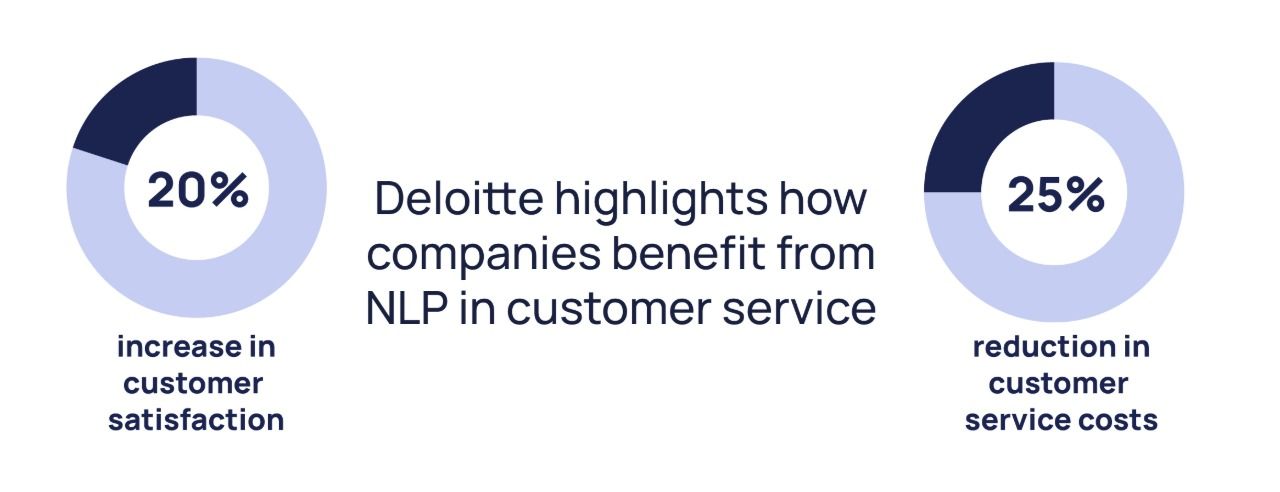
Make Your Brand Voice Heard Using AI for Social Media Monitoring

Your campaigns don’t need more content. They need better timing. Marketers using AI-driven personalization deliver when it matters most, no more guessing. Want to see how data-driven personalization is boosting loyalty through AI-driven personalization at scale? Scroll and read the blog.
AI for Social Media Monitoring Helps You Catch Signals Early
Your brand is always part of the conversation online. The risk is letting critical details go unnoticed as the feed continues to move. You’re not alone if you’ve struggled to achieve your goals. The sheer volume of posts, mentions, and opinions flying around online makes manual monitoring nearly impossible. What used to be a task of tracking a few brand mentions has evolved into something far more complex and more powerful. That’s where AI steps in.
Imagine this: instead of sifting through endless notifications, you have innovative tools that understand what’s being said, how people feel about your brand, and when something needs your attention. AI social listening tools aren’t just watching, they’re thinking. They analyze tone, filter out the noise, highlight early warning signs, and flag emerging trends before they become front-page problems.
With AI-powered social media insights, you’re not just reacting. You’re predicting. You’re shaping conversations. You’re staying ahead. And most importantly, you’re staying connected to what your audience thinks and feels without missing a beat.
How AI Improves Brand Monitoring on Social Media
AI-powered social media monitoring enables you to track brand mentions, understand public sentiment, and respond more effectively with real-time insights. It’s built around intelligent automation that filters and interprets vast amounts of online content.
Gathering the Right Data
AI tools begin by extracting data from public platforms, including Twitter, Facebook, Instagram, LinkedIn, Reddit, blogs, forums, and news sites. You’re not just getting mentions. The system captures keywords, hashtags, images, links, and metadata like location and time. This provides a comprehensive view of how your brand appears online, in context.
Understanding What People Really Mean
Natural language processing (NLP) enables AI tools to analyze text like humans do. It looks beyond keywords to understand tone, context, and intent. This helps your brand capture the real meaning behind posts, comments, and reviews, whether they’re supportive, sarcastic, or critical. It adds depth to your insights and reduces the likelihood of misinterpretation.
Measuring Sentiment in Real Time
Sentiment analysis sorts content into positive, negative, or neutral. This reveals how people genuinely feel about your brand, not just what they’re saying. You can track shifts in perception after a campaign, spot early signs of a PR issue, or monitor customer happiness. It’s automated feedback, straight from your audience.
Spotting Trends Before They Peak
Trend detection utilizes AI to identify patterns in how people interact with content, such as likes, shares, hashtags, or sudden spikes in keywords. It helps you get ahead of what’s coming next. Whether it’s a new customer concern or a viral moment you can tap into, you get alerts while it’s still relevant. That gives you more time to act, not just react.
Benefits of Automated Social Media Insights for Brands
AI-driven monitoring enables your brand to make faster, smarter marketing decisions, rather than just reacting to problems. You use it to improve content, timing, targeting, and customer engagement.
Let’s explore how automated social media insights for brands drive real impact:
- Smarter Content Choices: AI identifies the most effective content formats and messages by analyzing engagement and sentiment patterns. You create more of what works.
- Better Timing & Placement: Discover when and where to post for maximum traction. For example, LinkedIn posts around midday often perform best with B2B audiences.
- Stronger SEO Signals: AI recommends keywords that your audience searches for. Your content becomes easier to find and more aligned with user intent.
- Real-time Trend Tracking: Identify emerging topics and hashtags early. You can join relevant conversations before your competitors do.
- Faster Response to Negative Feedback: AI strategies for improving brand sentiment detection enable you to identify early signs of adverse reactions, allowing for a quicker response to negative feedback. You act quickly to limit reputational damage and adjust your messaging.
- Reliable Social Scheduling: Automated posting keeps your channels active and consistent while you focus on strategy and creative work.
- More Precise Targeting: AI builds detailed customer segments based on real behavior. You deliver messaging that feels relevant to each group.
- Proactive Campaign Planning: Utilize predictive insights to anticipate your audience’s next needs and requirements. You stay prepared and aligned with their needs.
- Retention and Loyalty Boosts: AI identifies high-value customers at risk of leaving. You reach out with personalized content or offers to keep them around.
“Products are made in a factory but brands are created in the mind.”
Addressing Common Challenges in Social Media Monitoring
Monitoring social media presents real challenges, including data privacy concerns, unclear sentiment analysis, high costs, and limited visibility into engagement. Without the right tools, it’s easy to fall behind or misread what your audience is saying.
Here are the issues you may have faced and how AI now helps you handle them more effectively:
Privacy Kept Raising Concerns
Challenge: You had to manage privacy manually, track consent, and stay up to date with changing regulations. It was easy to make mistakes and hard to scale.
How AI helps: Today, brand monitoring with AI includes built-in tools for privacy compliance. AI can flag sensitive data, manage consent logs, and mitigate your legal risk without requiring you to manually handle every detail.
Sentiment Analysis Often Misses the Mark
Challenge: Tools struggled to read tone. Sarcasm, humor, and slang were misinterpreted, making it hard to trust the insights from sentiment analysis in social media.
How AI helps: Modern AI understands nuance. It reads context, local expressions, and subtle tone shifts. This makes customer sentiment tracking more accurate and meaningful, allowing you to act based on what people are saying, rather than relying on a system’s predictions.
Expensive and Time-consuming
Challenge: You had to invest heavily in software, training, and staffing. And even then, results came in slowly, often too late to respond effectively.
How AI helps: AI-powered emotion detection in online feedback is automated, fast, and cost-effective. You don’t need a big team or deep pockets to gain valuable insights in real-time. It’s now easier to measure and respond to reactions across channels.
Limited Visibility into Scaled Engagement
Challenge: Determining what content worked or didn’t was mostly a matter of guesswork. Manual tracking couldn’t keep up with fast-moving trends or audience behavior.
How AI helps: With audience engagement analysis, AI shows you what’s working and why. It identifies patterns in likes, shares, comments, and reach, helping you adjust your strategy based on actual engagement, not assumptions.

Best Practices and Ethics in AI for Social Media Monitoring
To utilize AI effectively in social media monitoring, you require more than just powerful tools; you also need a clear plan and responsible execution. This includes practical best practices and a strong ethical framework to guide your actions.
Let’s explore how to use AI in social media monitoring responsibly and effectively:
Set Clear Goals and Metrics
Start by defining what you want to achieve, like brand awareness, customer insights, risk mitigation, or engagement. Without clear objectives, your monitoring efforts will be unfocused and ineffective. Align your KPIs (e.g., sentiment score, engagement rate) with your goals to track progress and make informed decisions. Regularly review these metrics to identify patterns, spot issues early, and improve your strategy over time.
Equip Teams with the Right Skills
AI tools are only as effective as the people using them. Train your staff to use the monitoring tools properly, interpret data correctly, and understand platform-specific nuances. Ongoing education helps teams avoid misinterpretation and fully leverage the benefits that AI can offer.
Maintain Transparency in Data Practices
Users should be aware of when and how their data is collected and analyzed. Communicate your data usage policies and, where appropriate, obtain consent. Transparency builds trust and reinforces accountability in your social media operations.
Protect User Privacy
Stick to data protection laws and the platform’s terms of service. Limit data collection to what is necessary, anonymize data where possible, and restrict access to sensitive information. Privacy isn’t just a legal requirement; it’s a core part of responsible data handling.
Address and Reduce Algorithmic Bias
AI systems can amplify bias if left unchecked. Audit your algorithms regularly, use diverse training datasets, and include ethical reviews in your AI development cycle. Bias in sentiment analysis or trend detection can lead to faulty conclusions, so proactive mitigation is critical.
Cross-industry Applications of AI in Social Media Monitoring
AI-driven social media monitoring is helping businesses improve brand monitoring by analyzing sentiment and turning large volumes of online conversations into meaningful insight. With this, companies can fine-tune messaging, respond more effectively to audience reactions, and make informed decisions that reinforce brand trust and relevance.
Here are examples of how different sectors are using AI to enhance brand monitoring through social media:
- Companies in the retail sector can utilize AI to monitor customer conversations during major campaigns and refine in-store or online experiences based on common feedback, thereby enhancing social media reputation management.
- Consumer goods brands can identify rising interest in older or seasonal products by analyzing discussion trends, then relaunch them with targeted messaging, demonstrating the benefits of automated social media insights for brands.
- Technology companies can evaluate user sentiment after product updates and adjust their rollout communication strategies, utilizing social media data analysis to reduce confusion and enhance satisfaction.
- Fashion brands can monitor real-time reactions during launches and adapt campaign visuals or copy based on how audiences are responding, applying real-time social media analytics to improve engagement.
- Food and beverage companies can analyze feedback during regional rollouts and refine messaging to reflect local preferences, enhancing overall brand consistency and customer connection.
“Your brand is not what you sell; it’s the experience you deliver.”
Manage Online Mentions and Responses Efficiently with JynAI
JynAI helps companies monitor social media and manage brand reputation by turning raw data into strategic inputs. Using AI, it tracks brand mentions, sentiment trends, influencer activity, competitor signals, and customer conversations across various platforms, including LinkedIn, Twitter, Reddit, Instagram, and others. Instead of relying on manual searches or scattered tools, JynAI gives you a single, organized view of what’s being said, where, and by whom. It flags significant changes, such as positive or negative ones, so your team can respond quickly and make better decisions with context that matters.
Built on the Panorama platform, JynAI is designed for real-world applications, not demonstrations. It integrates into your existing tools and workflows, eliminating the need for extra setup, training, or system changes. Whether you’re handling marketing alone or working with a larger team, JynAI provides you with better visibility, more control, and fewer distractions. With AI-powered monitoring, decision-ready data, and a focus on clarity and speed, teams can move more quickly and concentrate on what truly matters.
Sign up for free to start using JynAI for social media monitoring and brand reputation tracking.
FAQs
How does AI for social media monitoring benefit you?
Monitoring tools powered by AI scan posts and conversations across platforms to find brand mentions and sentiment patterns. The data helps you act faster and adjust messaging based on real-time audience feedback.
What are real-world examples of AI in social media listening?
Use cases include spotting early complaints after a product launch, tracking viral posts, and measuring campaign sentiment. These examples illustrate how AI empowers brands to remain vigilant and responsive.
Can AI provide accurate sentiment analysis?
Basic sentiments, such as positive, negative, or neutral, are usually detected with high accuracy. Context-heavy content, such as sarcasm or slang, may still require human review.
Can AI insights be used for campaign planning?
Content trends, engagement timing, and audience preferences guide planning decisions. Teams use this data to create more relevant and better-timed campaigns.
What is the role of machine learning in brand management?
Machine learning in brand management enables automatic detection of trends, sentiment shifts, and behavioral patterns. These capabilities support faster, more informed decisions across teams.
Are You Ready to Make AI Work for You?
Simplify your AI journey with solutions that integrate seamlessly, empower your teams, and deliver real results. Jyn turns complexity into a clear path to success.



